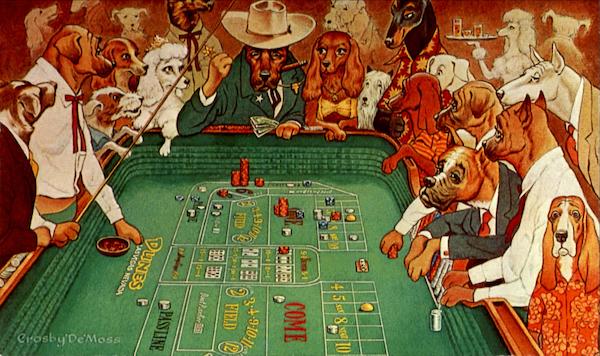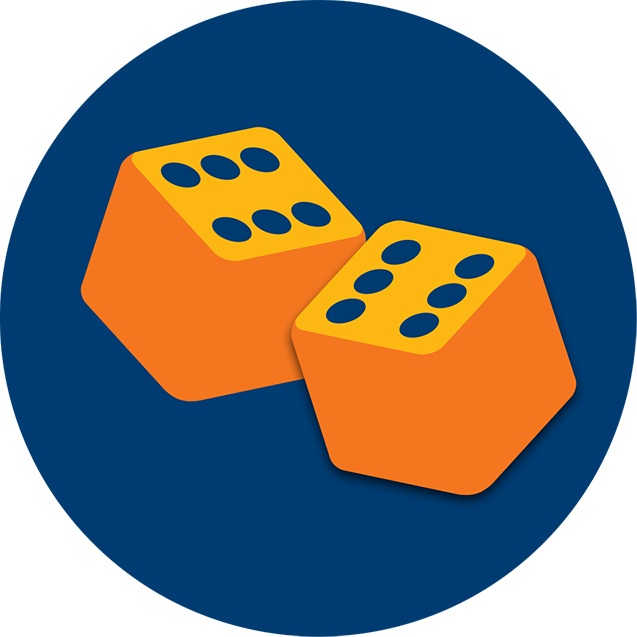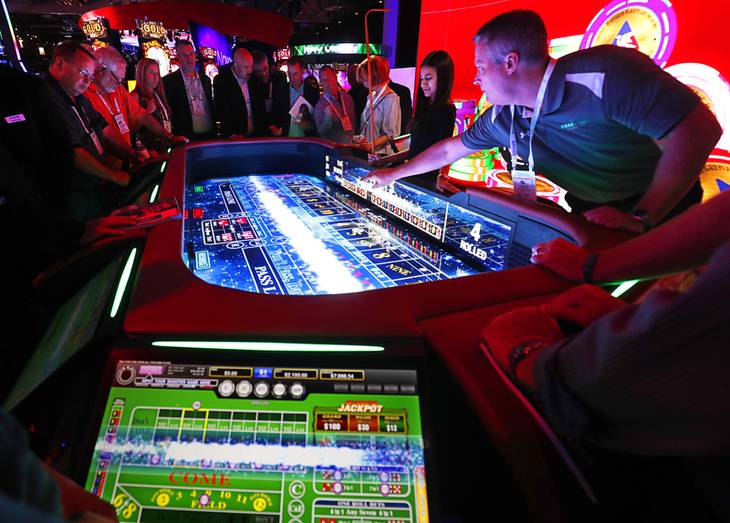How Roll Dice In Craps
Craps Talk 'Comin' out. Bet those hard ways. How about the C and E? Hot roll comin', play the field. A fast-talking stickman goes hand in hand with the rapid game of craps. Listening to the chatter, a novice player may have no idea what it's all about. In the example above, the stickman is letting players know that the next roll is a come-out and is urging bets on the hard ways. Craps is a dice game in which the players make wagers on the outcome of the roll, or a series of rolls, of a pair of dice. Players may wager money against each other (playing 'street craps') or a bank (playing 'casino craps', also known as 'table craps', or often just 'craps').
When you visit Leelanau Sands Casino you don’t want to miss the craps table. Since it’s one of the most exciting tables games on our casino floor, you’ll often hear cheering around the craps table. Not sure how to play? Let us help!
Craps is a fairly simple game but can get complicated with the sheer number of bets you can make on the table and odds you need to keep track of.
Allow our experts to guide you through the basic rules of craps and teach you how to play…
What You Need to Know About Craps
Craps is one of the only games in the casino where a player is in charge of their own hand. Meaning, instead of you being dealt cards, you get to select and roll your own dice. The goal in craps is to predict how the dice will land.

The table is played in rounds with two phases in a round; the come out and point. Each player’s turn to roll the dice moves clock-wise around the table at the end of each round. There can be up to 20 players at a craps table and everyone will get a chance to throw the dice. If you don’t’ want to throw the dice, you can still play, but you bet on the shooter, or the person throwing the dice.
How Do You Play Craps at the Casino?
When it’s your turn to roll, you’ll be presented with five dice on the table, pick up two of them. You can only handle and throw these dice with one hand. Before you throw you must place a bet on the pass line or don’t pass line (more on this later).
First Phase in Craps: Come out

This is the first roll of the game and the black puck in the middle will say “Off.” A dice roll of 2, 3 or 12 (rolling these numbers is also known as craps) ends the roll and the players lose their bets on the Pass Line, but you get to roll again! A come out roll of 7 or 11 results in a win for bets on the pass line (this is the only time in craps where 7 is good!). The shooter will continue to make come out rolls until they roll a 4, 5, 6, 8, 9, 10. When they land on one of those numbers, it becomes the point. When this happens, the dealer moves the ON button to the point number on the table and this signifies the beginning of the second round.
To recap: Pass line bets on the come out roll: 7 or 11 wins; 2, 3, and 12 lose.
Second Phase in Craps: Point
In the second round, it’s the shooter’s goal to roll the point number they established in the first round.
If the shooter rolls a point number, it’s a win for bets on the pass line and you get to roll again. If the shooter rolls a seven before their point number they “seven out,” and have lost; bets on the pass line lose and the round ends.
To clarify, the first roll in a round is the come out roll and is the beginning of a new game. A come out roll can only happen after the previous shooter makes their point or rolls a seven. When this happens, the dice move to the left of the shooter (clock-wise).
Craps Table Layout
A craps table is divided into two sides, both a mirror image of each other, to allow bettors on each side of the table to play without reaching all over the table.
Each area on the table signifies a different bet.

How to Place Basic Craps Table Bets
There are dozens of bet variations you can place on a craps table, and we won’t cover all of them here.
1) Pass and Don’t Pass Bets
Two of the best and safest bets in craps are bets on the Pass and Don’t Pass lines. When you bet on the Pass line, you’re betting that the shooter will win. The opposite is true for the Don’t Pass line.
To place these bets, simply place your chips in these areas on the table before the come out roll. Once the point is established, you cannot remove your pass line bet. Be sure to ask the dealer if you have any questions before placing your bet!
2) Odds Bets
Once the point is established, you can place odds bets or “bet behind the line.” The odds bet is a great bet because the casino has no advantage. To make this bet, simply place your chips behind your bet in the pass or don’t pass line. These bets can be removed or changed at any time during the round.
3) Numbers Bets
During the points roll, you can place bets on certain numbers that are on the table. If they come up during the points roll, you win! Different numbers have different odds. When you want to place a bet on a number, place your chips in front of you and tell the dealer where you want your bet placed.
4) Field Bets
If you want to play the field, place your chips in this area on the table. If the dice lands on any of the numbers in the field (2, 3, 4, 9, 11, 12) you win! These are one-roll bets, meaning they removed after the dice is rolled.
Tips for Playing Craps
- Never say the number seven at the craps table. It’s bad luck!
- When rolling the dice, roll them hard enough to hit the back wall of the table.
- When on the other end of the table, keep your hands and arms clear to avoid contact with the dice.
- Don’t intentionally hit the chips at the end of the table with the dice
- Don’t make late bets! Know how much and when you want to place a bet.
Play Craps in Leelanau County
Leelanau Sands Casino Casino offers Vegas style gaming with the charm of Leelanau County. Looking for a weekend getaway? Give us a call at(800) 930-3008to book a room! Don’t forget to check ourpromotionsfor any upcoming concerts or events.
Archaeologists recently uncovered a 600-year-old die that was probably used for cheating. The wooden die from medieval Norway has two fives, two fours, a three and a six, while the numbers one and two are missing. It is believed that the die was used to cheat in games, rather than being for a game that requires that specific configuration of numbers.
Today, dice like this with missing numbers are known as tops and bottoms. They can be a useful way to cheat if you’re that way inclined, although they don’t guarantee a win every time and they don’t stand up to scrutiny from suspicious opponents (they only have to ask to take a look and you’ll be found out). But there are several other options of cheating at dice too, and I’ll talk you through some of them here.
It should be noted that using these methods in a casino are illegal and I’m not suggesting you adopt them in such establishments – but it’s an interesting look at how probabilities work.
For a fair die, each number has an equal one in six, or 16.67%, chance of appearing. In the case of the die found in Norway, the numbers four and five are twice as likely to appear (as there are two of them), so have a one in three, or 33.33%, chance. The table shows these probabilities.
It does not take too much imagination to see how tops and bottoms can be used to your advantage. Let’s assume that we are playing with two normal dice. There are 36 possible outcomes but only 11 possible total values the dice can produce. For example, six-four, four-six and five-five all add up to ten.
If we instead used two top and bottom dice with only the numbers one, four and five on them, we can never roll a total of 11 or 12 as we don’t have a six to make that total. Similarly, we can never get a total of three as we don’t have a two and a one. But we also cannot get any combination that would produce a total of seven, which would otherwise be the most likely total to appear with a probability of 16.67%. In a game of craps there are times when it can be really bad to throw a seven. So if you are playing with dice where a combination of seven is impossible, you have a distinct advantage.
As these kind of tops and bottoms dice will not pass even a cursory, closer inspection, they have to be brought into the game for a short time and then switched out again. This requires the cheat to be an expert at palming, meaning being able to conceal one set of dice in your hand and then bring them into play while simultaneously removing the other dice.
Using two dice, with the same three numbers repeated, might be too risky so a cheat would probably only want to switch in a single die into the game. In our example, this would mean no longer avoiding a total of seven, which would still have a probability of 16.67%. But now the totals of five and six would also have this probability.
In craps the odds are such that when you are required to avoid a seven, it is the number most likely to appear. Switching in a single dice can still reduce the house’s chances of winning, by making other totals equally likely to appear.
Loaded dice

Loaded dice can make cheating harder to spot. These can take a number of different forms. For example, some of the spots on one face could be drilled out and the holes filled with a heavy substance so the die is more likely to land with this face down. If you were to drill out the number one, this means that the number six is more likely to appear, as the six is always on the opposite face to the one. Another way of loading a die would be to slightly change its shape, so that it is more likely to keep rolling. This may only give a small advantage, but it could be enough to tip the game in the cheat’s favour.
With tops and bottoms it is easy to know the probabilities of various totals appearing. This is not the case with loaded dice. One way of gauging the probabilities is to toss the dice a number of times (possibly thousands) and work out what numbers appear and how often. If you know that seven is less likely to appear than it would with fair dice then, over the long run, it would be a cheat’s advantage.
Controlled throws
One other way to cheat doesn’t require an unfair die at all but involves learning how to throw in a very controlled way. This can involve effectively sliding or dropping the die so the desired number appears. If two dice are used, one can be used to trap the other and stop it bouncing. If this is done by a skilled operator, it is very difficult to see.
Dominic LoRiggio, the “Dice Dominator”, was able to throw dice in what appeared a normal way but so that they would land on certain numbers. This was done by understanding how dice travel thorough the air and controlling each part of the throw. It took many (many, many) hours of practice to perfect, but he was able to consistently win at the craps table.
How Best To Roll Dice In Craps
Many would consider what LoRiggio did to be advantage play, meaning using the rules to your advantage. This is similar to card counting in blackjack. The casinos may not like it, but you are technically not cheating – though some casino may try to make you shoot the dice in a different way if they suspect you are doing controlled throws.